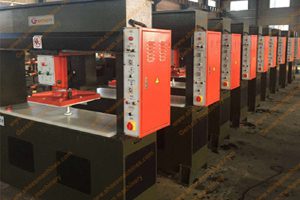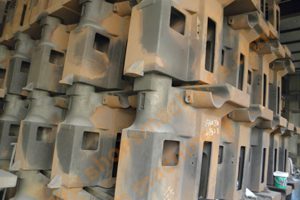There is no doubt that the leather, leather goods and footwear manufacturing markets in Southeast Asia are playing a more important role. Export data in recent years have proved this, especially for the growth of exports to major footwear consumers such as Europe and the United States.
According to the Vietnam Leather Association, the Vietnamese footwear industry set a target of US$20 billion in exports in 2018, which was US$14.67 billion in 2017 and is expected to increase by 36.3% year-on-year. Data show that Vietnam has become the second largest exporter of footwear products after China, but the export of 45.59 billion US Chinese footwear products is still ahead of competitor Vietnam for several years.
Despite news that more and more footwear brands are moving to Vietnam for processing due to lower labor costs, China is still far ahead in the footwear industry. In addition, Vietnam needs to import a large amount of raw and finished leather to meet the production of its footwear.
China has such a wealth of experience in global manufacturing, and its advantages in logistics, quality control, expertise and on-time delivery are beyond the reach of those who rely on the strength of the workforce. Without China’s manufacturing, it is impossible to meet the global demand for footwear. The foundation of all Chinese footwear industry is unlikely to be transferred to low-wage countries in the near future.
It is undeniable that ASEAN countries are making more contributions to the global footwear industry, but their combined production is still not comparable to China, including Vietnam, Indonesia, Cambodia, Thailand and the footwear industry.
Like China, all these countries need to import cowhide to meet leather shoes. In 2017, the import volume of raw materials in China reached US$ 5.68 billion. For suppliers in Western countries, China cannot be ignored as a major customer of leather exports, because China is still an “elephant” in Asia and cannot be quickly replaced by its competitors. Another important factor is China’s domestic market, where the market for more than 400 million middle-income consumers is huge. As we all know, China’s economic model is shifting from a simple economic growth model to the production of high value-added products to meet the challenge of transforming customer-oriented and service-based new business models, and to get rid of the old product-centric sales model. .
China has shifted from factory outsourcing production and export-driven economy to internal consumer demand and investment-driven economy, similar to the shift in the US economy to consumer demand-driven growth. Assuming China reduces footwear exports, this gap will be filled by the domestic market. Therefore, the key to measuring the success of China’s footwear industry is not the export, but the domestic demand of the residents. According to statistics from the China Leather Association, China imported only 139 million pairs of shoes in 2017, and locally produced shoes still dominate.
In the past three years, China’s leather industry has experienced a challenge of environmental governance. The sustainable leather industry is more focused on quality, more attractive and competitive in the international market. However, China needs to import raw and semi-finished leather. The China International Leather Exhibition, which will be held at the end of August, will become an important platform for buying and selling double transactions. By then, there will be 19,000 buyers from various Chinese provinces and cities to visit the exhibition, and the exhibition will also attract buyers from ASEAN countries to visit. With the expansion of the leather and footwear industry in Southeast Asia, China International Leather Exhibition is expanding its business impact in the region and has become the region’s main sourcing platform, where Western suppliers can meet buyers in Asia and China. When negotiating business, they know that the raw materials they supply are not only processed into footwear exports, but also their products are unparalleled Chinese consumers.





